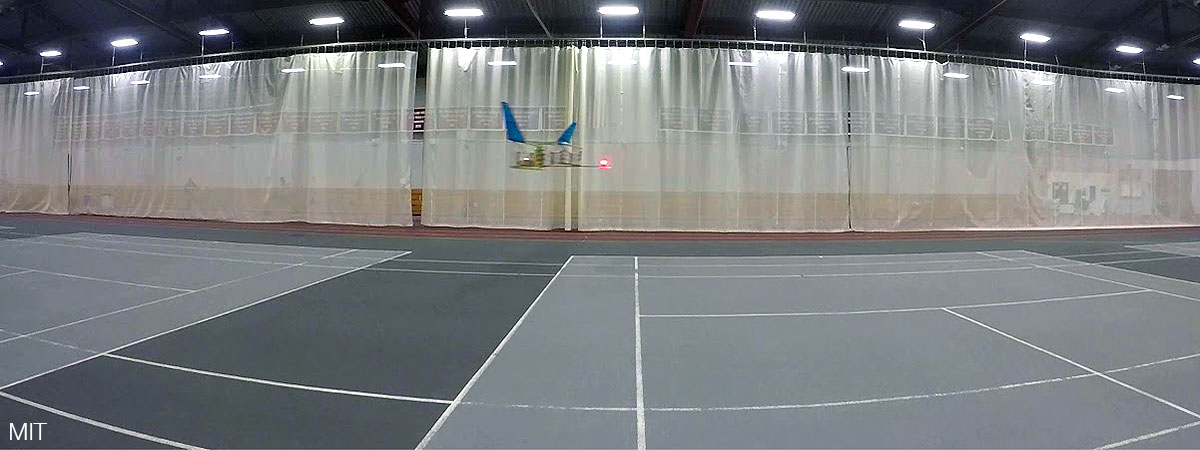By definition, wind is an air current produced by natural causes, such as changes in pressure or temperature. However, there is another method of generating wind, which was first identified in the 1920s and then developed in the 1960s: ionic wind. Also known as electro-aerodynamic thrust, ionic wind is a wind or thrust that can occur when an electric current is passed between a thin and a thick electrode. If enough voltage is applied, the electrodes can produce sufficient energy to propel a small plane. However, it has previously generally been limited to experiments with little prospect of finding practical, feasible applications.
In the search for new propulsion systems for aircraft, ionic wind has re-emerged as an alternative worth investigating; a promising, if still slightly remote, possibility.
Over the years, numerous researchers have hypothesised that using ion drive for jet propulsion (a procedure for moving a vehicle forward by expelling a stream of gases produced at high pressure by the engine in the opposite direction to travel) will always be tremendously inefficient, no matter how many design improvements are made. This is because of the enormous amounts of electricity they require to produce enough thrust to propel a vehicle.
Recently, engineers at Massachusetts Institute of Technology (MIT) built and managed to fly the first aircraft based on this concept, with no turbine engine or propellers and no dependence on fossil fuels. They managed to carry out a sustained flight, demonstrating that this technology is possible. Instead of a traditional engine, the aircraft was propelled by ionising the air and generating enough thrust to sustain itself in continuous flight.
The aircraft in question has a wingspan of 5 metres and weighs 2.45 kg. To put that in perspective, this is approximately a tenth of the luggage allowance for a single passenger in a typical commercial flight. It has thin electrodes that extend through its wings; at the front they have thin wires, and at the back there is a curved aerodynamic surface to produce the lift. Using its 500 watt lithium polymer battery, the thin wires at the front are charged to +20,000 volts and the aerodynamic profile behind is charged to -20,000 volts, creating a strong electric field. At the front, electrons are removed from nitrogen molecules in the air to produce ions. These then accelerate backwards, and produce the ionic wind that propels the plane forward.
During the 10 test flights, the plane successfully flew about 60 metres in about 12 seconds, with a thrust efficiency of about 2.6%; however, faster speeds will increase the efficiency of the system. Theoretically, at 1,080 km/h, which is faster than a passenger plane, it will reach 50% efficiency. The technique is similar to that used by ion engines in some spacecraft for travelling through space, although in their case they rely on the ionisation of fuel (such as xenon gas) to produce the thrust.
A crucial element of this ionic flight is the use of very low-weight batteries that are capable of producing high capacity discharge for a long period of time. The problem with electro-aerodynamics is how to generate huge potential differences at very low cost, in systems that are both very light and highly durable. The major advances in batteries that are expected to occur over the next few years will be essential, since the source of electrical power is currently the most important limiting factor in the prototype’s design.
We also have to keep in mind that although the prospects of building an aircraft with wings spanning 15-20 metres are good, manufacturing aircraft with wings that are 30-40 metres long, like those of large passenger aircraft, is likely to involve more than 10 years of further development and design. Another question is whether this new ionic wind engine is scalable. The most similar experience in terms of design are solar aeroplanes, which use photovoltaic solar energy to power electric motors, and which are also very quiet compared to traditional fuel engines.
It may be more reasonable to consider a hybrid propulsion technology that would allow us to have more efficient, quieter, mechanically simpler and less polluting aircraft, according to a statement from MIT. The engineers involved in the project also believe that in the short term, this ionic wind propulsion system could be used to make quieter drones.
One challenge that every aircraft powered by ionic wind will have to face is that, due to the nature of the system, the propulsion elements cannot be concentrated into a single area, but rather must occupy many points throughout the vehicle. This is because ionic drive depends on the wind produced between the electrodes; the larger the space between the electrodes, the stronger the thrust produced. For an aircraft, that space will obviously be equal to the space from one end of the vehicle to the other.
There are many other challenges that have yet to be overcome for implementing this technology. One of these, which is significant although not insurmountable, is the huge voltage required for the aircraft to take off.
It is possible that all these investigations and tests will lead nowhere; however, these innovations are without a doubt setting a trend in the search for solutions that are more environmentally friendly.
In any case, if this technology manages to reach suitable levels of efficiency, it could mark the origin of a new means of flying.



